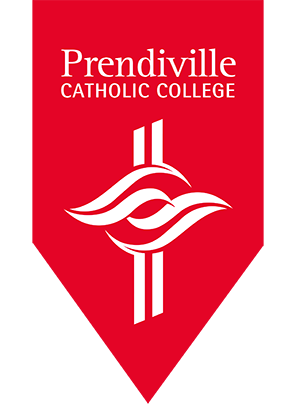- Home »
- Curriculum »
- Year 12 »
- Mathematics »
Mathematics

Mathematics
Year 12
Open the panels below for further details.
Mathematics Essential (General)
The Mathematics Essential General course focuses on using mathematics effectively, efficiently and critically to make informed decisions. It provides students with the mathematical knowledge, skills and understanding to solve problems in real contexts for a range of workplace, personal, further learning and community settings. This course provides the opportunity for students to prepare for post-school options of employment and further training.
This course is delivered as two units. Unit 3 provides students with the mathematical skills and understanding to solve problems related to measurement, scales, plans and models, drawing and interpreting graphs and data collection. Unit 4 provides students with the mathematical skills and understanding to solve problems related to probability, earth geometry and time zones, loans and compound interest. These topics are all delivered in contexts which are meaningful and of interest to the students. Possible contexts are Construction and design, Finance, Travel and Medicine.
Prerequisite: Nil
Mathematics Applications (ATAR)
This course focuses on the use of mathematics to solve problems in contexts that involve financial modelling, geometric and trigonometric analysis, graphical and network analysis, and growth and decay in sequences. It also provides opportunities for students to develop systematic strategies based on the statistical investigation process for answering statistical questions that involve analysing univariate and bivariate data, including time series data.
The Mathematics Applications ATAR course is designed for students who want to extend their mathematical skills beyond Year 10 level, but whose future studies or employment pathways do not require knowledge of calculus. The course is designed for students who have a wide range of educational and employment aspirations, including continuing their studies at university or TAFE.
Students will study Units 1 and 2 in year 11 followed by Units 3 and 4 in year 12. Students must achieve a passing mark at the conclusion of year 11 in order to continue in this course in year 12.
Unit three covers three topics: ‘Bivariate data analysis’, ‘Growth and decay in sequences’, and ‘Graphs and networks’.
‘Bivariate data analysis’ introduces students to some methods for identifying, analysing and describing associations between pairs of variables, including the use of the least-squares method as a tool for modelling and analysing linear associations. The content is to be taught within the framework of the statistical investigation process.
‘Growth and decay in sequences’ employs recursion to generate sequences that can be used to model and investigate patterns of growth and decay in discrete situations. These sequences find application in a wide range of practical situations, including modelling the growth of a compound interest investment, the growth of a bacterial population, or the decrease in the value of a car over time. Sequences are also essential to understanding the patterns of growth and decay in loans and investments that are studied in detail in Unit 4.
‘Graphs and networks’ introduces students to the language of graphs and the ways in which graphs, represented as a collection of points and interconnecting lines, can be used to model and analyse everyday situations, such as a rail or social network.
Unit four begins with ‘Time series analysis’ and continues students’ study of statistics by introducing them to the concepts and techniques of time series analysis. The content is to be taught within the framework of the statistical investigation process. Students will study consumer arithmetic further with emphasis on ‘Loans investments and annuities’ which aims to provide students with sufficient knowledge of financial mathematics to solve practical problems associated with taking out or refinancing a mortgage and making investments. Further study of ‘Networks and decision mathematics’ continues, and students use networks to model and aid decision making in practical situations.
Prerequisite:
- Mathematics Methods Units 1 & 2: All Grades, or
- Mathematics Applications Units 1 & 2: C Grade
Mathematics Methods (ATAR)
This course focuses on the use of calculus and statistical analysis. The study of calculus provides a basis for understanding rates of change in the physical world, and includes the use of functions, their derivatives and integrals, in modelling physical processes. The study of statistics develops students’ ability to describe and analyse phenomena that involve uncertainty and variation.
Mathematics Methods provides a foundation for further studies in disciplines in which mathematics and statistics have important roles. It is also advantageous for further studies in the health and social sciences. In summary, this course is designed for students whose future pathways may involve mathematics and statistics and their applications in a range of disciplines at the tertiary level.
The study of calculus continues by introducing the derivatives of exponential and trigonometric functions and their applications, as well as some basic differentiation techniques and the concept of a second derivative, its meaning and applications. The aim is to demonstrate to students the beauty and power of calculus and the breadth of its applications. The unit includes integration, both as a process that reverses differentiation and as a way of calculating areas. The fundamental theorem of calculus as a link between differentiation and integration is emphasized. Discrete random variables are introduced, together with their uses in modelling random processes involving chance and variation. The purpose here is to develop a framework for statistical inference. The logarithmic function and its derivative are studied. Continuous random variables are introduced and their applications examined. Probabilities associated with continuous distributions are calculated using definite integrals. In this unit, students are introduced to one of the most important parts of statistics, namely, statistical inference, where the goal is to estimate an unknown parameter associated with a population using a sample of that population. In this unit, inference is restricted to estimating proportions in two-outcome populations. Students will already be familiar with many examples of these types of populations.
Prerequisite:
- Mathematics Methods Units 1 & 2: C Grade
Mathematics Specialist (ATAR)
This course focuses on the use of calculus and statistical analysis. The study of calculus provides a basis for understanding rates of change in the physical world, and includes the use of functions, their derivatives and integrals, in modelling physical processes. The study of statistics develops students’ ability to describe and analyse phenomena that involve uncertainty and variation.
Mathematics Methods provides a foundation for further studies in disciplines in which mathematics and statistics have important roles. It is also advantageous for further studies in the health and social sciences. In summary, this course is designed for students whose future pathways may involve mathematics and statistics and their applications in a range of disciplines at the tertiary level.
The study of calculus continues by introducing the derivatives of exponential and trigonometric functions and their applications, as well as some basic differentiation techniques and the concept of a second derivative, its meaning and applications. The aim is to demonstrate to students the beauty and power of calculus and the breadth of its applications. The unit includes integration, both as a process that reverses differentiation and as a way of calculating areas. The fundamental theorem of calculus as a link between differentiation and integration is emphasized. Discrete random variables are introduced, together with their uses in modelling random processes involving chance and variation. The purpose here is to develop a framework for statistical inference. The logarithmic function and its derivative are studied. Continuous random variables are introduced and their applications examined. Probabilities associated with continuous distributions are calculated using definite integrals. In this unit, students are introduced to one of the most important parts of statistics, namely, statistical inference, where the goal is to estimate an unknown parameter associated with a population using a sample of that population. In this unit, inference is restricted to estimating proportions in two-outcome populations. Students will already be familiar with many examples of these types of populations.
Prerequisite:
- Mathematics Methods Units 1 & 2: C Grade


